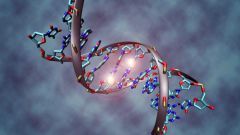Instruction
1
In the process of forming the hair color of the future of the child involved genes of both parents. Note that any genes, including those responsible for hair pigmentation, can be either dominant or recessive. In other words, strong or weak. In the process of the birth of the future man strong, dominant genes block the action of weak recessive and passed on to future generations. That is, if the father the gene for hair color is dominant, it will be inherited by the son or daughter.
2
If both parents are dominant or recessive genes, the "result" of their "fight" will be unpredictable. In the case can interfere with the genes of grandparents, influencing the outcome. In this case, the hair color of the future baby can be determined only with a certain degree of probability.
3
To determine the factor of dominance or recessivity their genes by the following criteria. If you have brown or green eyes, normal blood coagulation factor or a tendency to baldness (in males) and genes are dominant. Recessive genes are characterized by straight hair, lack of skin pigmentation and a negative rhesus factor of blood.
4
Don't forget that genetics is not mathematics. It does not give accurate answers to the questions of heredity, but only determines the most likely possibility. But in the process of transferring genes may include the genes of relatives of several generations. The result is unexpectedly born in a family is a red-haired child, who inherited the hair color from some distant relative. This is especially true at birth of first child.
5
Also do not forget that during the first 5 years of life a newborn's hair color may change more than once. Usually they change in the first or second years of life, and are formed completely by the age of 5 years. But in puberty because of changes in the amount of testosterone in the body of a teenager hair color may change again.
















